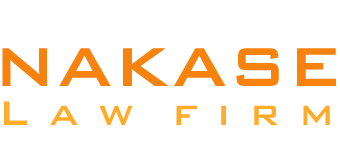1. What is an Ex Parte Motion?
An ex parte motion is a legal request presented to the court by one party without the opposing party’s presence. This process is typically reserved for emergencies where waiting for a standard hearing could result in irreparable harm.
Example:
A landlord discovers that a tenant is using a rental property to conduct illegal activities. The landlord files an ex parte motion seeking immediate court approval to lock the premises and prevent further illegal activity, arguing that waiting for a regular hearing could lead to further damage or liability.
2. When is it Appropriate to File an Ex Parte Motion?
Ex parte motions are appropriate in situations requiring immediate action to prevent harm, loss of rights, or disruption of justice.
Example:
A parent learns that the other parent plans to take their child out of the country without consent. The concerned parent files an ex parte motion to request an emergency custody order preventing the child’s removal, citing the urgency of the matter.
3. What Kind of Emergencies Justify an Ex Parte Request?
Emergencies justifying an ex parte motion include situations where harm is imminent or evidence could be lost.
Example:
A whistleblower employee discovers that their employer is about to destroy emails and documents critical to a fraud investigation. They file an ex parte motion seeking a court order to preserve the evidence immediately.
4. What Notice Requirements Must Be Met for an Ex Parte Application?
In many jurisdictions, the party seeking ex parte relief must notify the opposing party of the motion unless it is impossible or unsafe to do so.
Example:
A tenant files an ex parte motion to prevent an illegal eviction, alleging that the landlord has already begun removing their belongings. The tenant provides notice to the landlord by email and phone the day before the hearing to comply with local rules.
5. How Much Advance Notice Must Be Given?
The required advance notice varies by jurisdiction but is often 24 to 48 hours.
Example:
A small business files an ex parte motion to stop a former employee from disclosing trade secrets to a competitor. The company gives the employee 24 hours’ notice by certified mail and email as required by their state’s procedural rules.
6. What Happens if Proper Notice is Not Given?
Failure to meet notice requirements may result in the court denying the motion or postponing the hearing.
Example:
A homeowner files an ex parte motion to halt a foreclosure but does not notify the lender, despite being able to do so. The court denies the motion due to lack of proper notice and instructs the homeowner to refile with appropriate notification.
7. What Documentation is Required to Support an Ex Parte Application?
Supporting an ex parte application typically requires a detailed declaration and evidence substantiating the claims.
Example:
A software developer files an ex parte motion alleging their former partner is misappropriating intellectual property. They provide a sworn affidavit, emails showing unauthorized sharing of the code, and a timeline of events to support their request for a temporary restraining order.
8. Can the Opposing Party Respond During the Hearing?
If notified, the opposing party has the right to appear and respond at the hearing.
Example:
In a dispute over property use, one neighbor files an ex parte motion seeking an order to stop construction by the other neighbor. The opposing party attends the hearing, presenting their permits and counterarguments. The judge decides to schedule a full hearing after reviewing both sides.
9. What are the Consequences of Abusing the Ex Parte Process?
Abuse of the ex parte process can lead to sanctions, denial of the motion, or damage to the filer’s credibility.
Example:
A business owner files an ex parte motion to freeze a former partner’s accounts, claiming the partner is stealing funds. The court later finds the claim to be exaggerated and unsupported, imposing sanctions for misusing the ex parte process.
10. How Long Does a Decision on an Ex Parte Motion Typically Take?
Ex parte motions are usually resolved quickly, often the same day or within a few days.
Example:
A patient files an ex parte motion to obtain a medical injunction against a hospital that is refusing a life-saving procedure due to a billing dispute. The court reviews the motion the same day and issues a temporary order in favor of the patient.
Final Thoughts
Ex parte motions serve an important role in the legal system by allowing parties to seek swift court intervention in emergencies. The real-world examples above highlight the circumstances where these motions are essential and illustrate their potential consequences. Understanding the rules, notice requirements, and proper use of ex parte motions is crucial to ensuring they are used responsibly.
If you’re involved in a situation that may require an ex parte motion, consulting an experienced attorney can ensure your rights are protected while navigating this complex legal process.






























